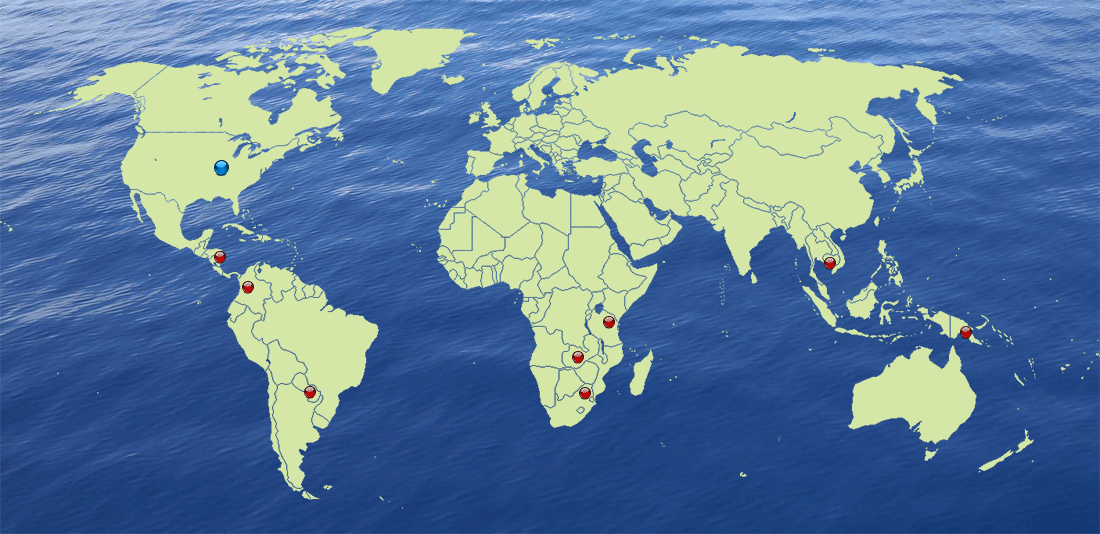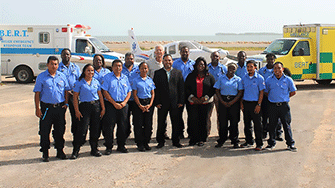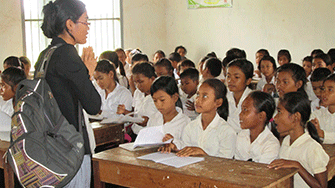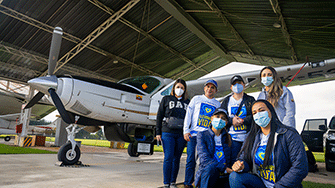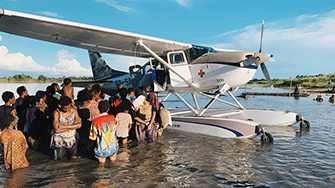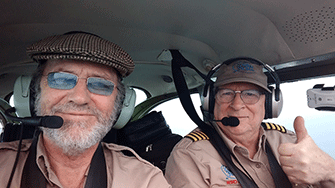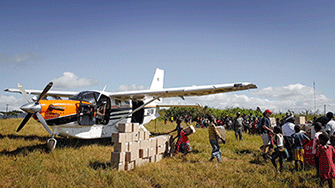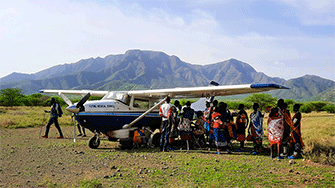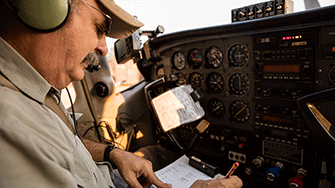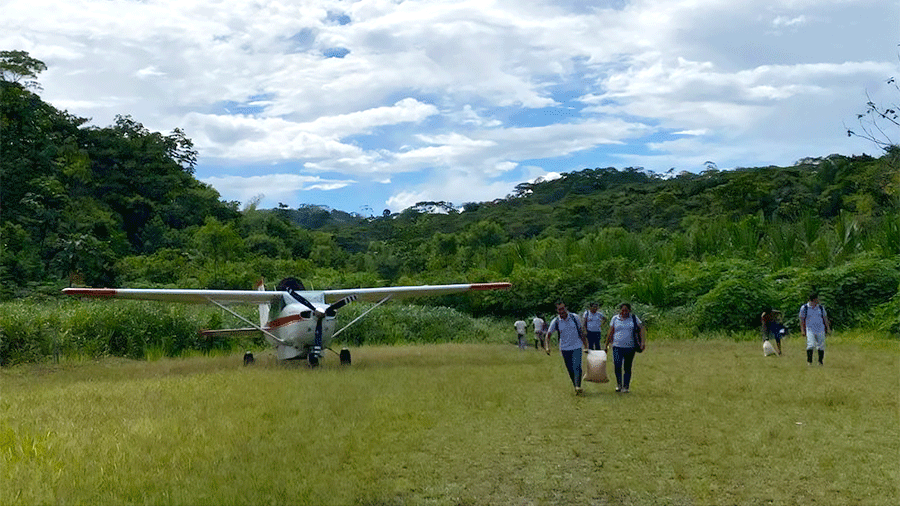
Global Humanitarian Network
The Wings of Hope Global Humanitarian Network (GHN) is a network of aviation organizations across the world, working together to change and save lives through the power of aviation. The GHN consists of air bases in 9 different countries ranging from local to national nongovernmental organizations (NGOs) . Wings of Hope supports the network by working with each GHN partner to build sustainable air service programs with community-focused development solutions. This approach and philosophy respect people’s rights to make decisions about their own lives.
In addition, the GHN facilitates a space for each organization to share resources, best practices and evaluation of programming. All GHN partners are offered webinars on various aviation and humanitarian practice discussions. The GHN meets annually to share its goals and lessons learned for the year. Each GHN partner is supported by the Wings of Hope headquarters in its pursuit to build sustainable bush flying operations. Wings of Hope offers support in sourcing aircraft, aircraft parts, maintenance and pilots. The Wings of Hope team also supports each GHN Partner with funding requests, strategic planning and impact evaluation. Wings of Hope believes that by leveraging the capacity of the entire network — and uniting as humanitarians — more people will have access to the resources needed to live healthy and dignified lives.
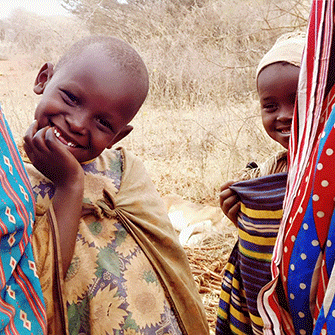
Global Humanitarian Network Values
Empowerment
The GHN seeks to uplift communities and organizations by connecting them with resources such as aviation supplies or funding sources. The goal is to support programs focused on communities gaining ownership over the factors that shape their lives.
Sustainability
The United Nations defines sustainability as “meeting the needs of the present without compromising the ability of future generations to meet their own needs.”
Scalability
The organization works conjointly with GHN partners to produce programs that can be scaled throughout the country of service or even throughout the GHN. In this way, best practices can be shared and exchanged throughout the network.
Stewardship
The GHN wants to ensure all resources obtained are effectively used to create the most impact.
Strengthening Communities Through Partnership
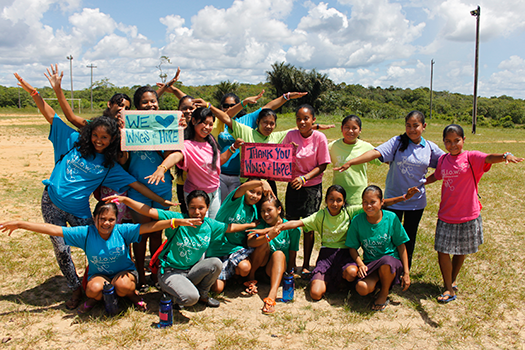
Wings of Hope provides humanitarian services by establishing formal partnerships with NGOs in under-resourced countries. The organization believes that helping a local NGO build its capacity to serve its country’s citizens has a far greater and lasting impact on community building.
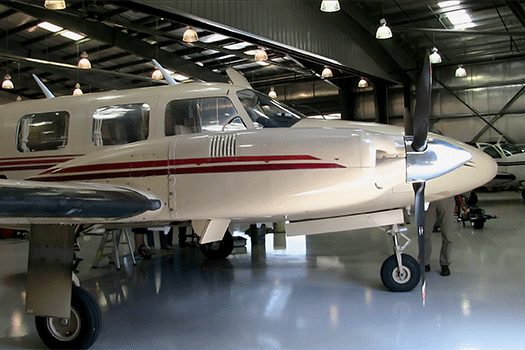
At other times, there is a need to help the NGO establish an air service. In these cases, Wings of Hope assists the NGO in acquiring aircraft, recruiting bush pilots, maintaining the aircraft and program planning to use the aircraft to provide humanitarian services.
Throughout the GHN, humanitarian services can be divided loosely into two models: medical evacuation (medevac) services or brigade services. To provide medevac, or emergency transport services, a communications platform is established that allows the remote village to communicate with the NGO’s home base that a member of the village needs lifesaving treatment. The NGO dispatches a plane to the village and either provides emergency treatment onsite or transports the patient to a hospital where adequate care can be provided.
Brigade service delivery typically does not involve emergency transport. Rather, the NGO works with the local community and health workers to schedule a visit — sometimes weeks in advance. Medical equipment and health care providers are transported by plane to the village and provide services based on local needs.
YEARS
serving humanity worldwide
OPERATIONS
served since founding
COUNTRIES
served since founding
When requests come in from humanitarian organizations for aircraft assistance/partnership, the team follows a vetting process that results in three categories.
- Mission-aligned NGOs seeking full partnerships, usually connected to an aviation base
- Organizations must fill out a New Partner and/or Air Service Request Form.
- Applicants are assessed on how long they have been a nonprofit, demonstrated need, a proven record of impact, financial support from a range of partners (not reliant on Wings of Hope) and long-term ability to support an aircraft, among a wide variety of other factors.
- Wings of Hope provides a range of discounted aircraft, parts and maintenance support. Cost sharing is negotiated and agreed upon through a Memorandum of Understanding signed by both partners.
- Mission-aligned nonprofits seeking one-time aviation assistance
- The organization and project must be vetted by the director of programs.
- Nonprofits must align with the Wings of Hope mission and the assistance provided must significantly impact their ability to fulfill their mission.
- For nonprofits that do not pass the vetting process, aircraft and other services will be provided at a market rate
- Some nonprofits are not chosen as partners based on a wide variety of factors. Wings of Hope reserves the right to decline formal partnership but strives to provide resources for next steps in building organizational strength.
The goal of GHN partnership is to advance health and well-being of communities served. Wings of Hope is committed to each partner by providing the resources to support aviation programs and working with each partner to reach their organizational and community goals.
Wings of Hope Roles and Responsibilities
- Assist with strategic planning to improve impact and reach of programs.
- Assist partners in capacity-building focused on organizational development, fundraising and measuring impact, if requested.
- If requested, provide maintenance/support services to partners by:
- Sourcing aircraft, aircraft parts or supplies
- Cost sharing of expenses will be negotiated between partners
Partner Roles and Responsibilities
- Uphold and maintain the Global Humanitarian Network values.
- Submit data and reports annually or as requested by Wings of Hope.
- Use community development best practices.
- Attend Wings of Hope GHN annual conference.
- Read and sign MOU (Memorandum of Understanding).
Community development is the process by which people come together to identify common problems or goals, mobilize resources and, in other ways, develop and implement strategies for reaching the objectives they want to accomplish. Effective community development will generally include:
Community Participation: Involvement and engagement by the community in community projects is necessary for a project’s sustainability. Active participation allows the community to be involved in decision making and taking responsibility.
Promoting Equity and Inclusion: Promoting equity and inclusion is about challenging persistent inequalities and understanding that every person, of all diverse identities, is key to creating change in their own communities.
Networking and Collaboration: Community networking creates space for organizations to share knowledge and expertise of best practices to create sustainable positive impact.
Management and Capacity Building: The process of developing and strengthening the skills, instincts, abilities, processes and resources that organizations and communities need to survive, adapt and thrive.
Cultural Preservation: The preservation of traditions, languages and artifacts of a community to maintain cultural heritage of the past for the benefit of the present and future generations. Cultural preservation keeps the integrity of a community and its people. Cultural preservation promotes economic growth and environmental sustainability.
When requests come in from humanitarian organizations for aircraft assistance/partnership, the team follows a vetting process that results in three categories.
- Mission-aligned NGOs seeking full partnerships, usually connected to an aviation base
- Organizations must fill out a New Partner and/or Air Service Request Form.
- Applicants are assessed on how long they have been a nonprofit, demonstrated need, a proven record of impact, financial support from a range of partners (not reliant on Wings of Hope) and long-term ability to support an aircraft, among a wide variety of other factors.
- Wings of Hope provides a range of discounted aircraft, parts and maintenance support. Cost sharing is negotiated and agreed upon through a Memorandum of Understanding signed by both partners.
- Mission-aligned nonprofits seeking one-time aviation assistance
- The organization and project must be vetted by the director of programs.
- Nonprofits must align with the Wings of Hope mission and the assistance provided must significantly impact their ability to fulfill their mission.
- For nonprofits that do not pass the vetting process, aircraft and other services will be provided at a market rate
- Some nonprofits are not chosen as partners based on a wide variety of factors. Wings of Hope reserves the right to decline formal partnership but strives to provide resources for next steps in building organizational strength.
The goal of GHN partnership is to advance health and well-being of communities served. Wings of Hope is committed to each partner by providing the resources to support aviation programs and working with each partner to reach their organizational and community goals.
Wings of Hope Roles and Responsibilities
- Assist with strategic planning to improve impact and reach of programs.
- Assist partners in capacity-building focused on organizational development, fundraising and measuring impact, if requested.
- If requested, provide maintenance/support services to partners by:
- Sourcing aircraft, aircraft parts or supplies
- Cost sharing of expenses will be negotiated between partners
Partner Roles and Responsibilities
- Uphold and maintain the Global Humanitarian Network values.
- Submit data and reports annually or as requested by Wings of Hope.
- Use community development best practices.
- Attend Wings of Hope GHN annual conference.
- Read and sign MOU (Memorandum of Understanding).
Community development is the process by which people come together to identify common problems or goals, mobilize resources and, in other ways, develop and implement strategies for reaching the objectives they want to accomplish. Effective community development will generally include:
Community Participation: Involvement and engagement by the community in community projects is necessary for a project’s sustainability. Active participation allows the community to be involved in decision making and taking responsibility.
Promoting Equity and Inclusion: Promoting equity and inclusion is about challenging persistent inequalities and understanding that every person, of all diverse identities, is key to creating change in their own communities.
Networking and Collaboration: Community networking creates space for organizations to share knowledge and expertise of best practices to create sustainable positive impact.
Management and Capacity Building: The process of developing and strengthening the skills, instincts, abilities, processes and resources that organizations and communities need to survive, adapt and thrive.
Cultural Preservation: The preservation of traditions, languages and artifacts of a community to maintain cultural heritage of the past for the benefit of the present and future generations. Cultural preservation keeps the integrity of a community and its people. Cultural preservation promotes economic growth and environmental sustainability.
I. Key Indicators for Partnerships
When requests come in from humanitarian organizations for aircraft assistance/partnership, the team follows a vetting process that results in three categories.
- Mission-aligned NGOs seeking full partnerships, usually connected to an aviation base
- Organizations must fill out a New Partner and/or Air Service Request Form
- Applicants are assessed on how long they have been a nonprofit, demonstrated need, a proven record of impact, financial support from a range of partners (not reliant on Wings of Hope) and long-term ability to support an aircraft, among a wide variety of other factors.
- Wings of Hope provides a range of discounted aircraft, parts and maintenance support. Cost sharing is negotiated and agreed upon through a Memorandum of Understanding signed by both partners.
- Mission-aligned nonprofits seeking one-time aviation assistance
- The organization and project must be vetted by the director of programs.
- Nonprofits must align with the Wings of Hope mission and the assistance provided must significantly impact their ability to fulfill their mission.
- For nonprofits that do not pass the vetting process, aircraft and other services will be provided at a market rate
- Some nonprofits are not chosen as partners based on a wide variety of factors. Wings of Hope reserves the right to decline formal partnership but strives to provide resources for next steps in building organizational strength.
II. Roles and Responsibilities of GHN Partnership
The goal of GHN partnership is to advance health and well-being of communities served. Wings of Hope is committed to each partner by providing the resources to support aviation programs and working with each partner to reach their organizational and community goals.
Wings of Hope Roles and Responsibilities
- Assist with strategic planning to improve impact and reach of programs.
- Assist partners in capacity-building focused on organizational development, fundraising and measuring impact, if requested.
- If requested, provide maintenance/support services to partners by:
- Sourcing aircraft parts or supplies, as requested, or aviation parts required, as necessary, provided cost sharing be negotiated of any airplane part or the cost of the part and its transportation to partner base.
Partner Roles and Responsibilities
- Uphold and Maintain the Global Humanitarian Network values.
- Submit data and reports annually or as requested by Wings of Hope.
- Use community development best practices.
- Attend Wings of Hope GHN annual conference.
- Read and Sign MOU (Memorandum of Understanding).
Global Humanitarian Network Values
Empowerment: The GHN seeks to uplift communities and organizations by facilitating them with resources such as aviation supplies or funding sources. The goal is to support programs focused on communities gaining ownership over the factors that shape their lives.
Sustainability: The United Nations defines sustainability as “meeting the needs of the present without compromising the ability of future generations to meet their own needs.”
Scalability: The organization works conjointly with GHN partners to produce programs that can be scaled throughout the country of service or even throughout the GHN. In this way, best practices can be shared and exchanged throughout the network.
Stewardship: The GHN wants to ensure all resources obtained are effectively used to create the most impact.
Best Practices for Community Development
Community development is the process by which people come together to identify common problems or goals, mobilize resources and, in other ways, develop and implement strategies for reaching the objectives they want to accomplish. Effective community development will generally include:
Community Participation: Involvement and engagement by the community in community projects is necessary for a project’s sustainability. Active participation allows the community to be involved in decision making and taking responsibility.
Promoting Equity and Inclusion: Promoting equity and inclusion is about challenging persistent inequalities and understanding that every person, of all diverse identities, is key to creating change in their own communities.
Networking and Collaboration: Community networking creates space for organizations to share knowledge and expertise of best practices to create sustainable positive impact.
Management and Capacity Building: the process of developing and strengthening the skills, instincts, abilities, processes and resources that organizations and communities need to survive, adapt and thrive.
Cultural Preservation: The preservation of traditions, languages and artifacts of a community to maintain cultural heritage of the past for the benefit of the present and future generations. Cultural preservation keeps the integrity of a community and its people. Cultural preservation promotes economic growth and environmental sustainability.

